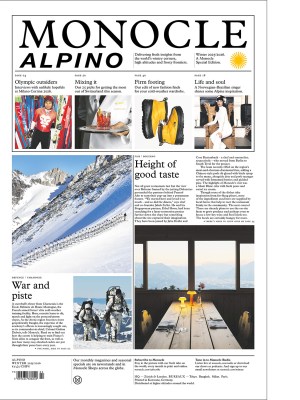It isn’t woke to demand uniforms for female soldiers that are fit for purpose
Designing uniforms for women is a matter of safety and performance that is long overdue in the military.
“Shrink it and pink it” sounds like a joke made between fashion designers. But for decades, this was the lazy answer to the female “problem” in equipment design – to make the men’s version of a piece of kit smaller and colour it in pastel. In the military, however, that quick fix had real costs: ill-fitting body armour, boots, flight suits and even underwear reduce performance, raise injury rates and make life harder for the troops who we rely on. To complain about this isn’t wokeism – it is a matter of pointing out a design malpractice with operational consequences. Only in the past few decades has research begun to catch up. Consider the US Army’s recent work on tactical bras. Its Combat Capabilities Development Command Soldier Center, known as Devcom SC, decided to treat bras as mission equipment rather than a fashion accessory. Designers conducted surveys with focus groups, prototyped flame-resistant concepts with adjustable support and explored the link between form and fabrics to comfort and focus. The result? Better-fitting, more functional garments that reduce distraction and improve endurance, providing practical gains for units on long patrols or under heavy load.
Uniforms tell a similar story. Trousers were made with knee pads in the wrong place, jackets with sleeves either too long or too short, and pockets placed for a male posture that limits mobility and creates friction during firefights and field training. Recent reporting shows that services are slowly reworking garments so that protection and range of motion were delivered where real bodies need them. This includes adjustments for torso length, shoulder slope and waist-to-hip proportions, along with improved options for layered kits suited for both hot and cold environments. These changes aren’t cosmetic tweaks; they restore function.
Flight crews offer a sharper example of the stakes. Female pilots have reported poor seals in anti-G suits along with ejector-seat harnesses that don’t align with smaller torso proportions. These criticisms are not just about comfort: they are safety and mission-capability issues that demand measurement, redesign and proper user testing. Recommendations for improvement have included re-imagined flight suits, harness interfaces and even cockpit ergonomics to make small changes that reduce risk and preserve operational tempo. And these fixes belong to a broader engineering doctrine called Human Systems Integration (HSI). Under the Joe Biden administration, Nasa and Pentagon guidelines explicitly required that anthropometry, ergonomics and human factors be integrated early in system design to ensure that equipment was usable by the force it will serve. HSI reframes “fit” as a systems requirement because design choices cascade into procurement, training and sustainment.
Despite this progress, there is still some way to go. Requirements for female-specific versions are too often weakened or dropped during development; data collection remains patchy; and procurement specifications still assume a one-size default. The solution is simple: mandate mixed-body anthropometric testing in procurement, fund targeted R&D (rather than token cosmetic options) and run field trials with diverse users to guarantee that the systems protect and enable everyone. Design is not neutral. When a boot, bra or flight suit is built around a historic default, it entrenches assumptions about who counts as a soldier. Fixing shouldn’t be seen as part of a culture war. It is engineering, evidence and common sense that would help achieve an effective force.



